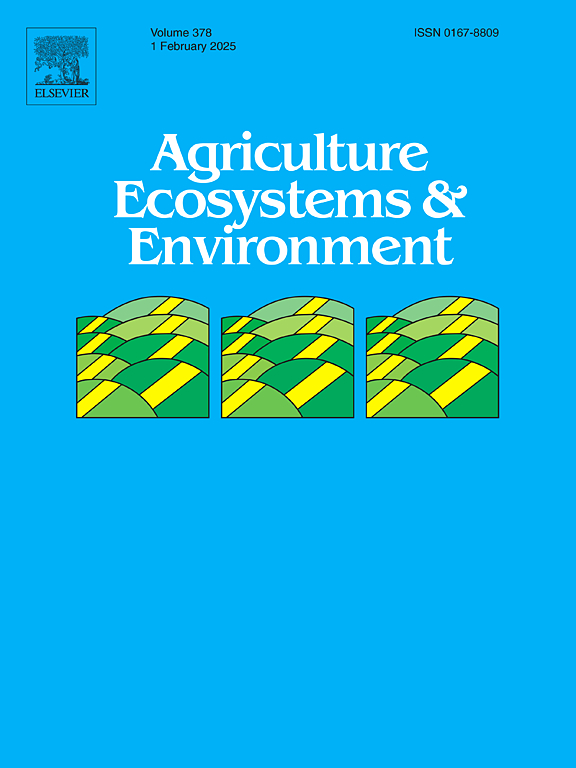Intercropping enhances stable soil organic carbon pool through macroaggregate protection and biochemical recalcitrance interactions
IF 6
1区 农林科学
Q1 AGRICULTURE, MULTIDISCIPLINARY
引用次数: 0
Abstract
Diversified cropping can enhance soil organic carbon (SOC); however, the mechanisms through which it alters the SOC pool and microbial regulation remain unclear. This study examined the responses of the stable SOC pool to intercropping and nitrogen (N) fertilization in a seven-year field experiment involving three cropping patterns: maize monoculture, potato monoculture, and maize/potato intercropping, under three N levels. Intercropping increased SOC content by 9.8–36.1 % and the stable C pool (the sum of the slow and resistant SOC pools) by 12.3–72.1 % in bulk soil compared to monocultures, with the maximum increase at the low nitrogen (LN) level. The enhanced stable C pool in intercropping was primarily attributed to greater proportion of large macroaggregates (> 2 mm) and increased aromaticity of SOC within these macroaggregates. Although N fertilization in intercropping did not affect SOC aromaticity, it further increased the proportion of large macroaggregates at the LN level. Intercropping shifted the microbial keystone taxa related to SOC formation from oligotrophic bacteria (e.g., Anaerolineaceae from Chloroflexi) in potato monoculture to copiotrophic bacteria (e.g., Micromonosporaceae of Actinobacteria), accompanied by a higher abundance from Chaetomiaceae of Sordariomycetes among the fungal keystone taxa within macroaggregates. These shifts reflected increased activities of carbon cycling enzymes (e.g., peroxidases and α-/β-glucosidase) and a higher proportion of large macroaggregates, facilitating the formation and accumulation of aromatic C in intercropping. This study provides insights into how intercropping enhances SOC stocks and offers guidance on N fertilization strategies to promote SOC sequestration in diversified cropping systems.
求助全文
约1分钟内获得全文
求助全文
来源期刊

Agriculture, Ecosystems & Environment
环境科学-环境科学
CiteScore
11.70
自引率
9.10%
发文量
392
审稿时长
26 days
期刊介绍:
Agriculture, Ecosystems and Environment publishes scientific articles dealing with the interface between agroecosystems and the natural environment, specifically how agriculture influences the environment and how changes in that environment impact agroecosystems. Preference is given to papers from experimental and observational research at the field, system or landscape level, from studies that enhance our understanding of processes using data-based biophysical modelling, and papers that bridge scientific disciplines and integrate knowledge. All papers should be placed in an international or wide comparative context.
 求助内容:
求助内容: 应助结果提醒方式:
应助结果提醒方式:


